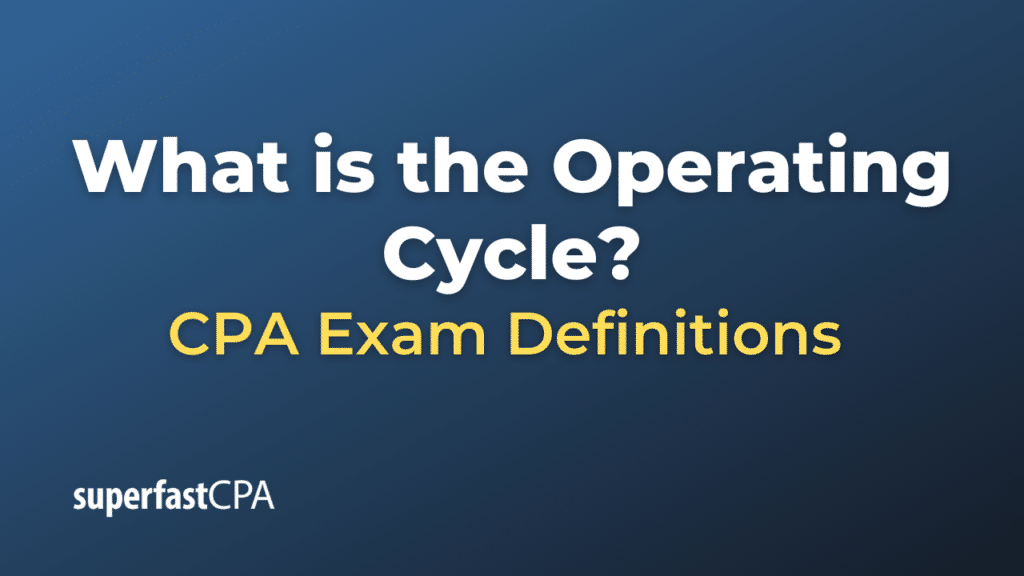Operating Cycle
The operating cycle, also known as the cash conversion cycle, is the time it takes for a company to buy and manufacture inventory, sell that inventory to customers, and collect the cash from those sales. It’s essentially the time that elapses between the outlay of cash for materials necessary to manufacture products and the collection of cash from customers after the products are sold.
The operating cycle is typically calculated as the sum of the days inventory outstanding (DIO) and the days sales outstanding (DSO).
- Days Inventory Outstanding (DIO): This is the average number of days it takes a company to sell its inventory. It is calculated as (Inventory / Cost of Goods Sold) x 365.
- Days Sales Outstanding (DSO) : This is the average number of days it takes a company to collect payment after a sale has been made. It is calculated as (Accounts Receivable / Total Credit Sales) x 365.
The length of the operating cycle can vary greatly from one industry to another. For example, a bakery will have a much shorter operating cycle compared to a car manufacturer because baked goods are produced and sold quickly, while cars take a long time to manufacture and sell.
A shorter operating cycle is generally more favorable because it means the company can convert its inventory into cash more quickly, improving its liquidity. A longer operating cycle could be a sign of inefficiency and might result in cash flow issues, as more capital is tied up in inventory or accounts receivable.
Example of Operating Cycle
Let’s consider a hypothetical company, “Widgets Co.,” that manufactures and sells widgets.
Let’s say the following information is available:
- Inventory at the beginning of the year: $200,000
- Cost of goods sold (COGS) during the year: $800,000
- Accounts receivable at the beginning of the year: $150,000
- Total credit sales during the year: $1,000,000
We can calculate the Days Inventory Outstanding (DIO) and the Days Sales Outstanding (DSO) as follows:
DIO = (Inventory / COGS) x 365 = ($200,000 / $800,000) x 365 = 91.25 days
DSO = (Accounts Receivable / Total Credit Sales) x 365 = ($150,000 / $1,000,000) x 365 = 54.75 days
The operating cycle is the sum of the DIO and DSO:
Operating Cycle = DIO + DSO = 91.25 days + 54.75 days = 146 days
So, it takes Widgets Co. approximately 146 days to turn its inventory purchases into cash receipts from customers. This means the company’s cash is tied up in inventory and accounts receivable for about 146 days. If Widgets Co. can find ways to reduce this time, perhaps by speeding up production or collection times, it could free up cash for other uses and improve its liquidity.














